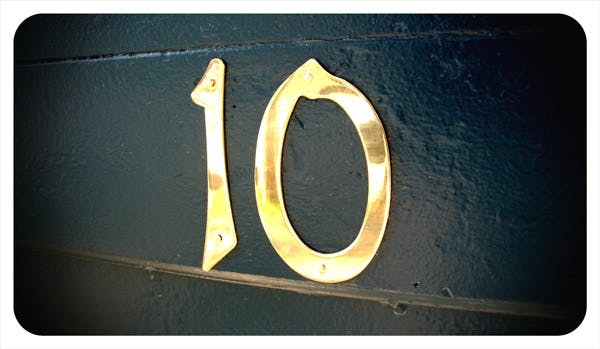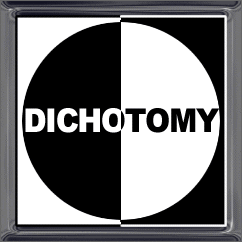The Flames Through 10: Identity and the Rebuild Continuum
By Kent Wilson
11 years ago
The Flames slow start, unfortunate early injuries and subsequent spanking at the hands of the Vancouver Canucks recently has caused the rebuild debate to rear its ugly head in Flamesland again. This is an inevitability until the club does one of two things: takes a firm step forward and becomes a meaningful contender again or bottoms out completely and starts from scratch out of necessity.
Even though the club currently finds itself in 14th in the conference, Calgary’s start to 2013 has nonetheless muddied the waters no matter what side of the debate you fall on. On the one hand, the Flames have decent underlying numbers, have frequently outshot their opponents and it has only been bad luck or lousy goaltending that has sunk them to the bottom of the Western Conference.
On the other hand, the Flames are who we thought they are. There’s been some improvement over the past Brent Sutter iterations of the club thanks to summer additions, the coaching staff and the progression of guys like Backlund and Brodie, but the truth is the team remains fundamentally flawed in a number of key areas. The top-end of the roster is expensive and aging, and there is a dearth of players at or near their prime age. And although the emergence of Baertschi and Gaudreau as potential bluechip prospects the last year or so is a good development, the truth is the Flames organizational cupboard is hardly bursting with talent.
Furthermore, Calgary’s depth at center has been exposed as woefully lacking with the injury to Backlund recently. Center depth has always been a bone of contention in town, but there’s no doubt with Alex Tanguay, Ben Street, Matt Stajan and Blair Jones currently counting as the Flames top-4 pivots at the NHL level, things haven’t been this dire down the middle in Calgary in the post-lockout (both of them) era. Particularly since the coach is forced to play converted 32-year old winger Tanguay out as the club’s power vs power option most nights.
Rebuild Continuum

While rebuilding vs. competing is often conceptualized as a dichotomy, I’ve mentioned previously I think it’s better to think of it as a continuum, particularly since the act of building and maintaining a roster is on-going and perpetual. Technically all GM’s are always looking to improve their teams at all times, but the motivations and moves will change depending on where they fall on that continuum.
The Flames are stuck solidly in the middle of that sliding gradient. They have enough quality NHLers to beat up bad teams, can compete solidly on many nights with good teams and occasionally beat the big boys. They also have a near complete lack of elite talent in the organization, whether we’re talking active bobdies or guys in the pipeline (Baertschi and Gaudreau notwithstanding). The remaining, yet unanswered question is how they move forward without falling off a cliff.
Personally, I am paradoxically encouraged by the Flames start despite the poor record, the last two uninspired losses notwithstanding. Not to say that Calgary is suddenly a contender again, only that a quick turnaround is at least possible with some luck and prudent management. In the depths of the team’s struggles under Brent Sutter last season I was mostly convinced the club would have to run aground completely before the ship could be righted, but the Bob Hartley version of the Flames seems to have nodes of hope around which the org could begin to build around. The blueline is strong, there is capable talent on the wings and the coaching staff at least seem to have things in order.
In short: I don’t think the team has to be terrible in order to get better.
The Post-Iginla Identity
Perhaps the greatest misconception I notice in the rebuild/don’t rebuild debate is the idea that trading Iginla or somehow proceeding without him (and Kipper for that matter) is necessarily indicative of a "tear-down". That is, if Iginla is moved at the deadline then the club might as well trade the rest of their veteran talent and burn the thing to the foundation.
This is predicated on the conditioned notion that the Flames simply can’t compete without Iginla on the roster; that he remains the center tent pole of the Flames big top. This is also apparently the misconception under which management labors given their reluctance to even consider an Iginla trade (although that is probably informed by other considerations as well. No one wants to be the guy who traded Jarome out of Calgary, particularly if the return doesn’t work out. Those kind of moves stick to a GM’s resume forever).
Iginla remains a capable enough player who can put up some points and play a lot of minutes. But he’s not elite anymore and he won’t be getting any better as time moves on. Ideally he’s a complementary piece on a good team. On the Flames, because he plays all night and gets a ton of PP time, he’s probably a 10-13 GVT (goals versus threshold) player as things stand over a full season, comparable to guys like David Krejci, Blake Wheeler and Martin Erat last year. That means he’s worth about two wins per 82 games more than your typical replacement level player. That’s something, but it doesn’t turn a lousy team into a good one, nor a good team into a basement dweller.
The Flames fortunes don’t necessarily turn on the presence of Jarome anymore. Once upon a time that was undeniably true and his long history as the club’s lone, implacable, elite forward is why his presence seems persistently crucial to the line-up. It doesn’t help perceptions that the team has been unable to internally groom a replacement or two to take the torch from Jarome’s hands as he ages, but the fact remains the bottom wouldn’t suddenly fall out if Feaster finally decided to leverage Iginla for a good return. At least, no moreso than it would anyways.
That realization gives the organization options. Trading Iginla or Kipper isn’t an acknowledgement that the club is terrible and needs to be ripped apart at the seams. Meaning, an Iginla trade doesn’t have to inexorably result in a cascade of other trades where the org liquidates Bouwmeester, Cammalleri, Tanguay, Giordano, Hudler, Wideman, etc. because, hey! they are going to suck anyways, right?
Let’s be very clear then: the Flames aren’t too bad now, they can continue to be not too bad even without Iginla and they therefore have an opportunity to leverage an asset or two and avoid a full tear down in favor of a quicker re-stock.
Moving Forward

Trading Iginla or Kiprusoff as they near the end of their tenure here isn’t absolutely required either. What is needed is the Flames management to alter the staid and stagnant formula which has been used to create the roster over the last decade: namely, build around the iconic Iggy and Kipper. Erect them as untouchable pillars in the line-up and assume with the right alchemy the rest of the team will come together behind them and experience some sort of renaissance.
Those days are past. The Flames have plenty of good to very good NHLers, but no true elite talent. The top-end is expensive and doddering and you can count on two fingers the number of prospects who are a good bet to be impact NHLers at some point in the next 4 years. The goal now isn’t to supplement Calgary’s former superstars – it is to find their replacements, one way or the other.
Recent articles from Kent Wilson





